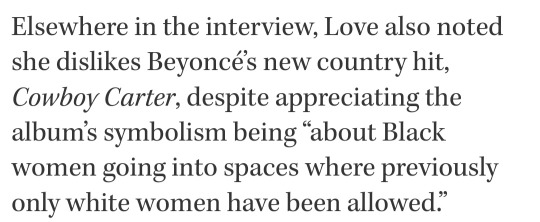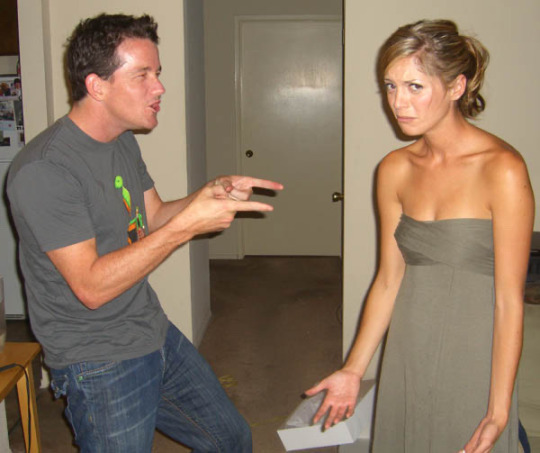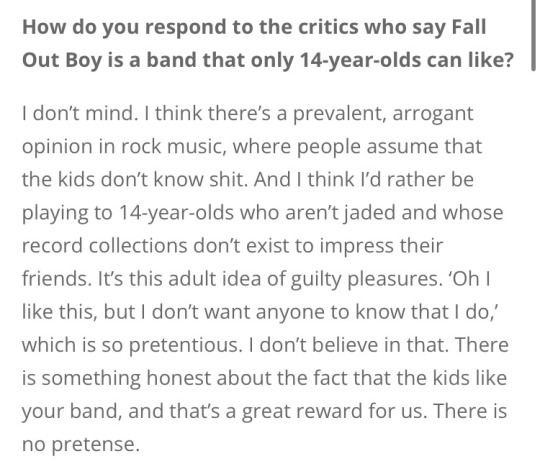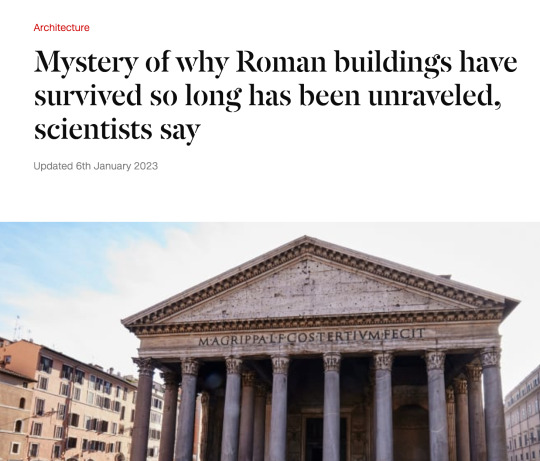#Article
Text




Nicholas Galitzine for Washington Post - April 2024
367 notes
·
View notes
Text






#courtney love#article#beyonce#cowboy carter#taylor swift#madonna#lana del rey#someone woke up on the wrong side of the bed#2024
65 notes
·
View notes
Text
april 16, 2024
“Patients, not politicians, should make their own health-care decisions”: a Washington Post op-ed by Karlie Kloss
44 notes
·
View notes
Text
General Mills Unveils Limited-Edition, Collectible Cereal Boxes Featuring Gen Z Icons TOMORROW X TOGETHER
MINNEAPOLIS--(BUSINESS WIRE)--Apr 16, 2024--
General Mills has joined TOMORROW X TOGETHER, also known as TXT, in a harmonious partnership to bring the refreshing energy of Gen Z’s most iconic band to your breakfast table. Together they’re releasing special-edition TXT cereal boxes with General Mills’ iconic brands, featuring cutout standees so TXT fans can have a free-standing display of each band member to add to their memorabilia collection and celebrate the group’s recent 6th Mini Album minisode 3: TOMORROW release.
General Mills has partnered with K-pop group TXT, also known as TOMORROW X TOGETHER, to take over cereal boxes for a limited time! (Photo: Business Wire)
Cereal enthusiasts and TXT fans, affectionately known as MOA (which stands for “moments of alwaysness,”) are in for a treat as each of the five members is featured individually alongside a beloved General Mills’ brand mascot across fan-favorites like Cinnamon Toast Crunch, Lucky Charms, Cookie Crisp, Trix and Honey Nut Cheerios. From the Silly Rabbit to the Cookie Crisp Wolf, it’s a meeting of two iconic groups, bringing the ultimate star power and vibrant world of K-pop straight to your cereal box.
The TXT band members are thrilled to connect their love of cereal to their fans through this General Mills partnership:
SOOBIN, featured on Trix: “What I love about the collaboration with General Mills is the unique and adorable characters of each cereal. My favorite is the Silly Rabbit from Trix. I think it’s a great match for me!”
HUENINGKAI, featured on Cinnamon Toast Crunch: “I think MOA will be delighted to see us featured in the General Mills packages on the store shelves! I hope everyone starts their day energetically with TXT limited edition cereals.”
YEONJUN, featured on Cookie Crisp: “I’m excited about the collaboration because General Mills is a brand that everyone can enjoy together. I hope many people will like the TXT limited edition, too!”
Additionally, BEOMGYU is featured on Lucky Charms, TAEHYUN on Honey Nut Cheerios, and a TXT group photo can be found exclusively in Walmart stores on REESE’S PUFFS boxes.
Don’t miss your chance to collect these limited-edition TXT cereal boxes and add a touch of TXT magic to your mornings! To learn more, visit GeneralMills.com and follow @generalmills on socials at Instagram, Facebook, Twitter and TikTok.
About TOMORROW X TOGETHER
TOMORROW X TOGETHER—consisting of SOOBIN, YEONJUN, BEOMGYU, TAEHYUN, and HUENINGKAI—established themselves as Gen Z Icons through the compelling soundtrack that represents the common experiences and emotions of today’s generation. The quintet’s 4th Mini Album minisode 2: Thursday’s Child (May 2022 release) debuted at No. 4 on the Billboard 200 and charted for 14 weeks, while 5th Mini Album The Name Chapter: TEMPTATION (January 2023 release) debuted atop the chart. In July 2022, Gen Z’s leading band became the first K-pop group to perform at LOLLAPALOOZA in Chicago and returned a year later in August 2023 to become the first K-pop group to headline the festival. Notably, TOMORROW X TOGETHER have been nominated at prestigious awards, such as the American Music Awards and People’s Choice Awards and won at the 2022 MTV EMAs (Best Asia Act) and 2023 MTV VMAs (PUSH Performance of the Year). The band is set to release their highly-anticipated 6th Mini Album minisode 3: TOMORROW on April 1, 2024.
About General Mills
General Mills makes food the world loves. The company is guided by its Accelerate strategy to drive shareholder value by boldly building its brands, relentlessly innovating, unleashing its scale and standing for good. Its portfolio of beloved brands includes household names such as Cheerios, Nature Valley, Blue Buffalo, Häagen-Dazs, Old El Paso, Pillsbury, Betty Crocker, Yoplait, Totino’s, Annie’s, Wanchai Ferry, Yoki and more. Headquartered in Minneapolis, Minnesota, USA, General Mills generated fiscal 2023 net sales of U.S. $20.1 billion. In addition, the company’s share of non-consolidated joint venture net sales totaled U.S. $1.0 billion.
#txt#tomorrow x together#240417#article#soobin#yeonjun#beomgyu#taehyun#hueningkai#General Mills#apnews
23 notes
·
View notes
Text
There are two configurations available: one with 6GB of RAM and 128GB of storage for $599 and another with 8GB of RAM and 256GB of storage for $679. The storage of both models can be expanded via microSD, and the phone features a modular design that can be easily disassembled using a standard Phillips #00 screwdriver to replace broken components. It also has an IP54 rating, meaning the device is protected against dust and water sprays.
The Murena Fairphone 4 will ship to US customers with 5G and dual SIM support, a removable 3905mAh battery, a 48-megapixel main camera, a 48-megapixel ultrawide, and a 25-megapixel selfie camera. The phones will be available to order exclusively from Murena’s webstore starting today.
22K notes
·
View notes
Text

The New York Times, however, does have rules and norms. Schwartz had no prior reporting experience. Her reporting partner Gettleman explained the basics to her, Schwartz said in a podcast interview on January 3, produced by Israel’s Channel 12 and conducted in Hebrew.
Gettleman, she said, was concerned they “get at least two sources for every detail we put into the article, cross-check information. Do we have forensic evidence? Do we have visual evidence? Apart from telling our reader ‘this happened,’ what can we say? Can we tell what happened to whom?”
Schwartz said she was initially reluctant to take the assignment because she did not want to look at visual images of potential assaults and because she lacked the expertise to conduct such an investigation.
This is stunning.
The fear among Times staffers who have been critical of the paper’s Gaza coverage is that Schwartz will become a scapegoat for what is a much deeper failure. She may harbor animosity toward Palestinians, lack the experience with investigative journalism, and feel conflicting pressures between being a supporter of Israel’s war effort and a Times reporter, but Schwartz did not commission herself and her nephew to report one of the most consequential stories of the war. Senior leadership at the New York Times did.
Schwartz said as much in an interview with Israeli Army Radio on December 31. “The New York Times said, ‘Let’s do an investigation into sexual violence’ — it was more a case of them having to convince me,” she said. Her host cut her off: “It was a proposal of The New York Times, the entire thing?”
“Unequivocally. Unequivocally. Obviously. Of course,” she said. “The paper stood behind us 200 percent and gave us the time, the investment, the resources to go in-depth with this investigation as much as needed.”
The whole piece is quite long, please go read it yourself, it's quite definitive.
11K notes
·
View notes
Text
Yuzu Pays $2.4 Million to End Nintendo Lawsuit
8K notes
·
View notes
Text
I’m reading the Wikipedia page for high-fives (you know, like you do) and I’m losing it over this part

Look at the misery in this last pic. The absolute sorrow. Their friendship has been shattered and will never recover.

I think this has some serious meme potential
6K notes
·
View notes
Text


patrick stump, 2006 / 2023
37K notes
·
View notes
Text
"Nick is innately handsome, intelligent, sensitive, funny, sporty and dashing. … And I know he’s got much, much more to show [...] Nick could have chemistry with a lamp. He’s so easy to connect with.”
- Anne Hathaway talking about Nicholas Galitzine (Washington Post - April 2024)
41 notes
·
View notes
Text
In photographs, she looks like a scout leader about to ask if you’ve had anything to eat today. It takes a moment to see that often, just out of focus, her fingers are holding a joint and her vest is covered in risque pins, including an embroidered cannabis leaf.
Mary Jane Rathbun, jailed thrice and the reason for California’s groundbreaking action on medical cannabis, was better known as Brownie Mary, the patron saint of AIDS patients. More than twenty years after her death, it’s not hard to understand why this grandmotherly figure remains one of San Francisco’s most beloved activists.
She’s been called the Florence Nightingale of HIV/AIDS. She was famous for bringing her magic brownies to gay men and others suffering from wasting syndrome, a name for the deleterious effects on appetite caused by the stigmatized retrovirus.
Much like Nightingale’s work on hygiene and compassionate care, Brownie Mary’s legacy lives on in the recipes and procedures still used today in medicinal edible production.
Rathbun’s illicit distribution began in the early 1970s, when she was in her early 50s, while she worked at an IHOP in the Castro, 37 years before government-approved research finally proved that her hypothesis about distributing ingestible cannabis to AIDS patients was worth investigating. (Read more at link)
23K notes
·
View notes
Text

February 15, 2024
2K notes
·
View notes
Photo

Mystery of why Roman buildings have survived so long has been unraveled, scientists say (Katie Hunt, CNN, Jan 06 2023)
“Roman concrete, in many cases, has proven to be longer-lasting than its modern equivalent, which can deteriorate within decades.
Now, scientists behind a new study say they have uncovered the mystery ingredient that allowed the Romans to make their construction material so durable and build elaborate structures in challenging places such as docks, sewers and earthquake zones.
The study team, including researchers from the United States, Italy and Switzerland, analyzed 2,000-year-old concrete samples that were taken from a city wall at the archaeological site of Privernum, in central Italy, and are similar in composition to other concrete found throughout the Roman Empire.
They found that white chunks in the concrete, referred to as lime clasts, gave the concrete the ability to heal cracks that formed over time.
The white chunks previously had been overlooked as evidence of sloppy mixing or poor-quality raw material.
"For me, it was really difficult to believe that ancient Roman (engineers) would not do a good job because they really made careful effort when choosing and processing materials," said study author Admir Masic, an associate professor of civil and environmental engineering at the Massachusetts Institute of Technology. (…)
Additional analysis of the concrete showed that the lime clasts formed at extreme temperatures expected from the use of quicklime, and "hot mixing" was key to the concrete's durable nature.
"The benefits of hot mixing are twofold," Masic said in a news release.
"First, when the overall concrete is heated to high temperatures, it allows chemistries that are not possible if you only used slaked lime, producing high-temperature-associated compounds that would not otherwise form.
Second, this increased temperature significantly reduces curing and setting times since all the reactions are accelerated, allowing for much faster construction."
To investigate whether the lime clasts were responsible for Roman concrete's apparent ability to repair itself, the team conducted an experiment.
They made two samples of concrete, one following Roman formulations and the other made to modern standards, and deliberately cracked them.
After two weeks, water could not flow through the concrete made with a Roman recipe, whereas it passed right through the chunk of concrete made without quicklime.
Their findings suggest that the lime clasts can dissolve into cracks and recrystallize after exposure to water, healing cracks created by weathering before they spread.
The researchers said this self-healing potential could pave the way to producing more long-lasting, and thus more sustainable, modern concrete.
Such a move would reduce concrete's carbon footprint, which accounts for up to 8% of global greenhouse gas emissions, according to the study.
For many years, researchers had thought that volcanic ash from the area of Pozzuoli, on the Bay of Naples, was what made Roman concrete so strong.
This kind of ash was transported across the vast Roman empire to be used in construction, and was described as a key ingredient for concrete in accounts by architects and historians at the time.
Masic said that both components are important, but lime was overlooked in the past.”
9K notes
·
View notes
Text
#black woman#black women#homicide#violence#domestic violence#cdc#data#black men#white women#shocking#misogynoir#anti blackness#institutional racism#police brutality#strong black woman stereotype#poverty#housing#article#nbc news#sbrown82
1K notes
·
View notes
Text
« To mention the global loss of biodiversity, that is to say, the disappearance of life on our planet, as one of our problems, along with air pollution or ocean acidification, is absurd—like a doctor listing the death of his patient as one symptom among others.
The ecological catastrophe cannot be reduced to the climate crisis. We must think about the disappearance of life in a global way. About two-thirds of insects, wild mammals and trees disappeared in a few years, a few decades and a few millennia, respectively. This mass extinction is not mainly caused by rising temperatures, but by the devastation of natural habitats.
Suppose we managed to invent clean and unlimited energy. This technological feat would be feted by the vast majority of scientists, synonymous in their eyes with a drastic reduction in CO2 emissions. In my opinion, it would lead to an even worse disaster. I am deeply convinced that, given the current state of our appetites and values, this energy would be used to intensify our gigantic project of systemic destruction of planetary life. Isn't that what we've set out to do—replace forests with supermarket parking lots, turn the planet into a landfill? What if, to cap it all, energy was free?
[...C]limate change has emerged as our most important ecological battle [...] because it is one that can perpetuate the delusional idea that we are faced with an engineering problem, in need of technological solutions. At the heart of current political and economic thought lies the idea that an ideal world would be a world in which we could continue to live in the same way, with fewer negative externalities. This is insane on several levels. Firstly because it is impossible. We can't have infinite growth in a finite world. We won't. But also, and more importantly, it is not desirable. Even if it were sustainable, the reality we construct is hell. [...]
It is often said that our Western world is desacralised. In reality, our civilisation treats the technosphere with almost devout reverence. And that's worse. We perceive the totality of reality through the prism of a hegemonic science, convinced that it “says” the only truth.
The problem is that technology is based on a very strange principle, so deeply ingrained in us that it remains unexpressed: no brakes are acceptable, what can be done must be done. We don't even bother to seriously and collectively debate the advisability of such "advances". We are under a spell. And we are avoiding the essential question: is this world in the making, standardised and computed, overbuilt and predictable, stripped of stars and birds, desirable?
To confine science to the search for "solutions" so we can continue down the same path is to lack both imagination and ambition. Because the “problem” we face doesn't seem to me, at this point, to be understood. No hope is possible if we don't start by questioning our assumptions, our values, our appetites, our symbols... [...] Let's stop pretending that the numerous and diverse human societies that have populated this planet did not exist. Certainly, some of them have taken the wrong route. But ours is the first to forge ahead towards guaranteed failure. »
— Aurélien Barrau, particle physicist and philosopher, in an interview in Télérama about his book L'Hypothèse K
1K notes
·
View notes


